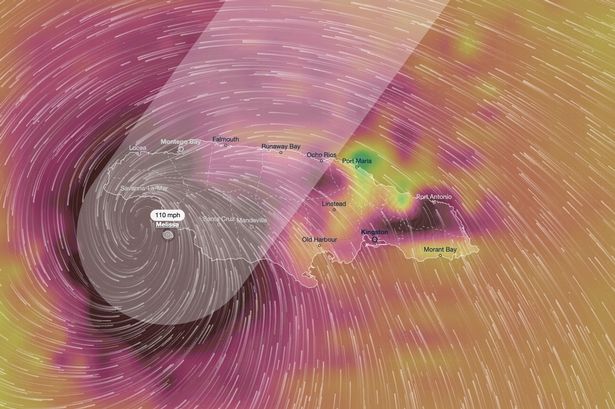As Hurricane Melissa approaches Jamaica, residents are bracing for severe impacts from the powerful storm. Currently classified as a Category 5 hurricane, Melissa boasts maximum sustained winds exceeding 165 mph. Meteorologists from AccuWeather anticipate that wind speeds could escalate to 180 mph, accompanied by storm surges reaching up to 15 feet along the southern coast. The hurricane is on track to make landfall early on March 12, 2024, marking it as the most formidable storm of the year and potentially the most destructive in Jamaica’s history.
The storm is expected to cause widespread devastation not only in Jamaica but also in neighboring countries, including Haiti, the Dominican Republic, and Cuba. Heavy rainfall will likely lead to catastrophic flooding, with conditions expected to remain perilous into next week.
Current Situation in Jamaica
In Kingston, the capital city, residents are already experiencing the storm’s effects. Milton Walker, director of news and sports at RJRGleaner Communications Group, reported that preliminary effects include landslides and downed power lines. “They’re predicting catastrophic flash floods and landslides, and we already have some landslides,” Walker stated in an interview. He noted that the situation is serious, with many areas experiencing power outages.
As of this morning, reports indicate that thousands of customers are without electricity. Additionally, all three international airports in Jamaica—Norman Manley International Airport in Kingston, Ian Fleming International Airport in Ocho Rios, and Sangster International Airport in Montego Bay—are currently closed.
Walker described the atmosphere as tense, with a “fair amount of worry and anxiety” among the population. The Ministry of Health is actively working to reassure residents, providing hotlines for counseling as many individuals express fear about the impending storm. “They’ve been stressing the importance of looking after children and the elderly,” he added, emphasizing the need for support in vulnerable communities.
Evacuation Efforts and Challenges
Despite the growing urgency, Walker noted that some residents are hesitant to evacuate. Government officials are working diligently to encourage compliance with evacuation orders. In a press conference earlier today, Desmond McKenzie, Minister of Local Government and Community Development, reported that only 972 individuals had sought shelter in the country’s designated hurricane shelters, which total 881. McKenzie indicated that only 76 shelters are currently active, with some parishes reporting no shelter use.
“Clarendon has the highest number of evacuees so far, with 311 individuals, followed by St. Thomas with 227 and Kingston and St. Andrew with 179,” McKenzie stated. Walker expressed concerns over the low number of evacuees, noting that government officials aim to relocate approximately 50,000 people to safety.
Preparations have been ongoing across the nation since last week, including clearing gullies and ensuring shelters are ready for public use. Evacuation orders remain in effect for several areas, including Port Royal and parts of St. Andrew, as officials urge residents to heed warnings.
Walker, opting to remain at his office compound in Kingston, described it as a fortified location. “Our building is pretty robust,” he said, highlighting the typical construction standards in Jamaica, which often involve reinforced concrete to withstand hurricanes.
Reflecting on Hurricane Melissa, Walker mentioned that this storm represents a rare and potentially catastrophic event for the island. “The last significant direct hit we experienced was from Hurricane Gilbert in 1988,” he noted, emphasizing the seriousness of the situation for the Jamaican people.
As the nation prepares for what could be a historic storm, communities are urged to stay informed and prioritize safety as Hurricane Melissa approaches.







